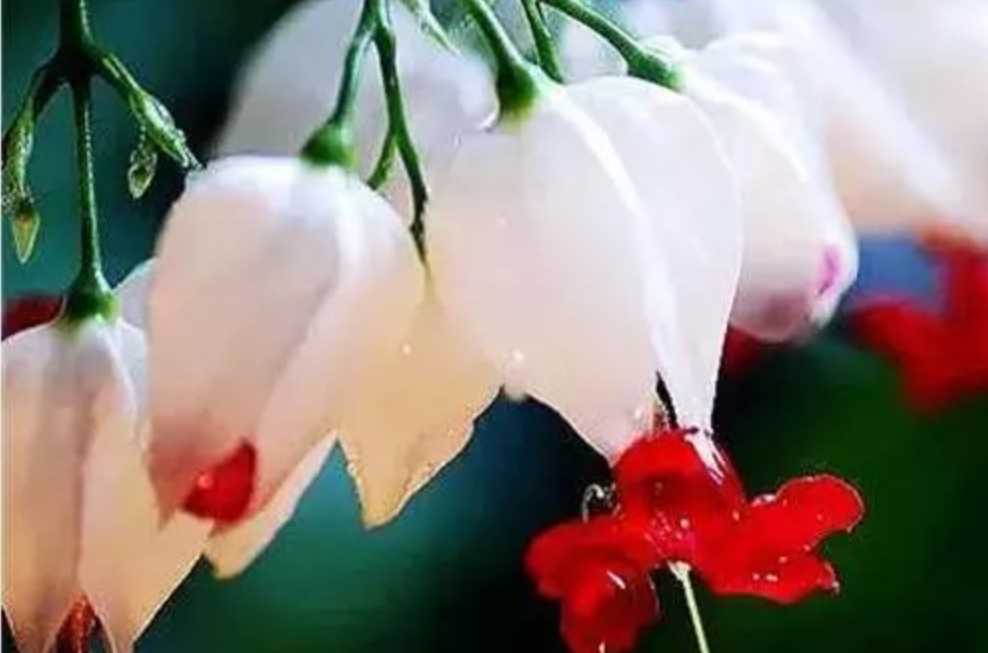The plant’s most iconic feature is its flowers, which resemble a dragon exhaling pearls. Each bloom emerges from a deep purple, star-shaped calyx that gradually splits to reveal a white, tubular corolla. The corolla’s tip often stains red, mimicking a drop of blood, while the elongated stamens protrude like a dragon’s tongue, creating a vivid contrast. Flowers cluster in pendulous cymes, blooming from spring to fall above glossy, ovate leaves (5–10 cm long) with serrated edges. As a climber, it uses twining stems to reach 2–5 meters, making it ideal for pergolas or hanging baskets.
Dragon’s Tongue Flower thrives in well-drained soil and full sun to partial shade, requiring regular watering in dry periods. In temperate regions, it’s often grown as a houseplant, where it can bloom year-round with proper care (18–24°C and high humidity). In its native range, the plant attracts pollinators like bees and butterflies, while its sap has been used in traditional medicine for its anti-inflammatory properties. Though not endangered, habitat loss in West Africa threatens wild populations. As a symbol of boldness and mystery, this flower continues to inspire garden designs and cultural narratives, standing as a testament to nature’s ability to blend artistry with functionality.








